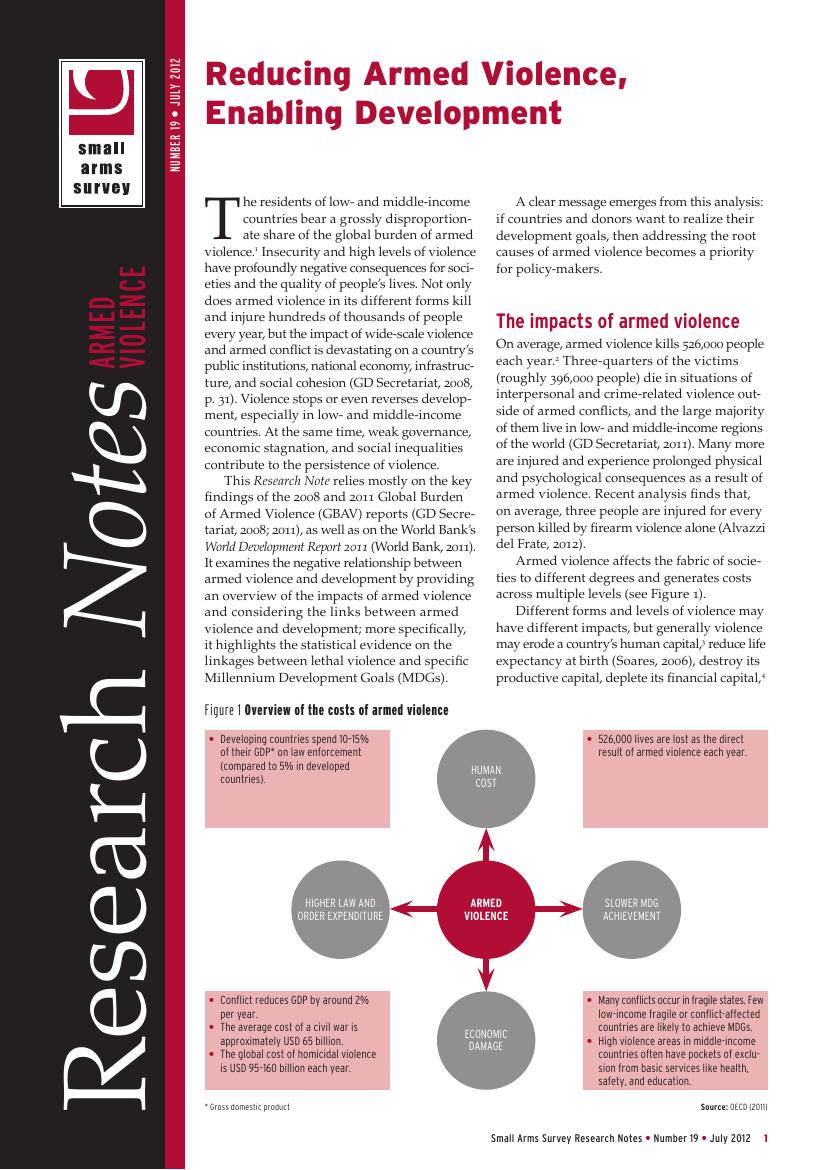
Reducing Armed Violence, Enabling Development (Research Note 19)
On average, armed violence kills 526,000 people each year.
Three-quarters of the victims (roughly 396,000 people) die in situations of interpersonal and crime-related violence outside of armed conflicts, and the large majority of them live in low- and middle-income regions of the world. Many more are injured and experience prolonged physical and psychological consequences as a result of armed violence. The impact of wide-scale violence and armed conflict is devastating on a country’s public institutions, national economy, infrastructure, social cohesion, and its people’s psychological health and well-being.
Violence stops or even reverses development, especially in low- and middle-income countries. At the same time, weak governance, economic stagnation, and social inequalities contribute to the persistence of violence.
Reducing Armed Violence, Enabling Development is a Research Note from the Small Arms Survey and the Geneva Declaration on Armed Violence and Development. It examines the negative relation between armed violence and development by providing an overview of the impacts of armed violence, and reflects on the links between armed violence and development. The Research Note highlights the statistical evidence on the linkages between lethal violence and specific Millennium Development Goals (MDGs).
This Research Note relies mostly on the key findings of the 2008 and 2011 Global Burden of Armed Violence (GBAV) reports, as well as on the World Bank’s World Development Report 2011.
Have your say about Small Arms Survey publications and products: take 5 minutes to fill out our questionnaire.